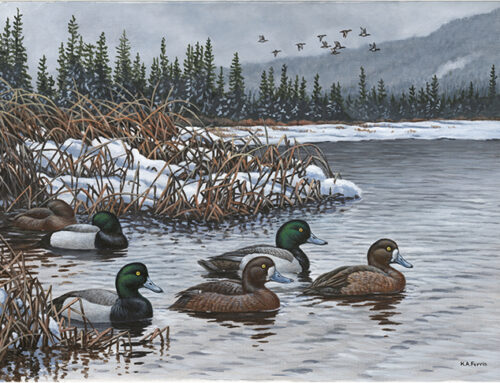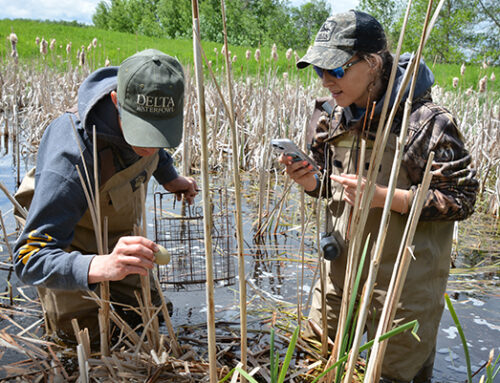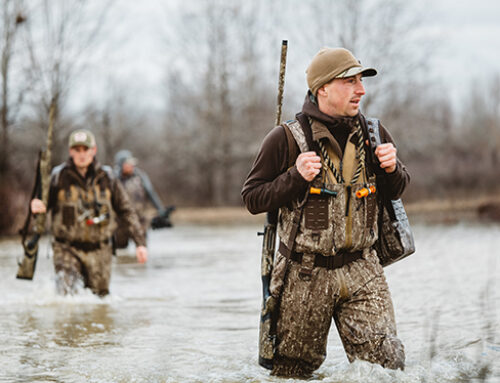Wildlife Habitat Canada Grant Boosts Hen House Program

A generous grant from WHC will maintain hundreds of Delta’s mallard-producing Hen Houses.
Soon, scores of ducks will arrive on the breeding grounds in search of places to nest, and thousands of hen mallards will settle into Delta Waterfowl Hen Houses to hatch their broods.
Delta’s nest structure technicians have been working this winter to make sure Hen Houses across Prairie Canada are ready to produce ducks. They clean out old nests, make sure the structure is secure and level, and add new hay and straw.
Like previous years, Delta’s duck production efforts received a strong boost from a Wildlife Habitat Canada grant. This year, WHC awarded $63,828 to maintain 800 Delta Hen Houses, which also includes repair and/or replacement of 200 nest structures.
“The grant is big news for those who love mallard hunting, as Hen Houses are the most effective way we have to produce them,” said Jim Fisher, director of conservation policy for Delta Waterfowl. “This project is a part of an effort that will impact all flyways, as Delta Hen Houses are located in Alberta, Saskatchewan, Manitoba and Ontario.”
Hen Houses, which are used primarily by mallards, are wire nesting cylinders placed over water in small wetlands. Delta focuses nest structures in wetland areas with limited nesting cover where predators such as red foxes, raccoons and skunks can easily find duck nests in sparse patches of grass. Research has shown that mallards using Hen Houses in some intensely farmed regions of Canada are 12 times more likely to hatch a nest than those nesting in the grass.
Delta has more than 8,000 Hen Houses in the United States and Canada, which produce an estimated 40,000 hatched ducklings annually. Hen Houses are proven, cost-efficient tools that add mallards to the fall flight.
WHC funding is generated from sales of the Canadian Wildlife Habitat Conservation Stamp and Print, a.k.a. Canada’s “duck stamp.” WHC offers grants to conserve, restore and enhance wildlife habitat, foster conservation leadership, promote the conservation contributions of waterfowl hunters and encourage waterfowl hunting participation.
“Delta appreciates that WHC has provided this important funding support to produce ducks,” Fisher said. — Paul Wait






I would like to know where to place hen houses for ducks to use.
I have placed a house on ditches with cattails & ducks using the area.
5 to 6 years and still not used.
I have open swamp with grass would that be better placement?
Woody’s use 66 -75 % of their houses.
Hey Jack,
Great question! When picking locations for Hen Houses, I select shallow wetlands (<3-4 ft deep) with stable water levels and some cattails or bulrush along the shoreline. Hen Houses that are installed over open water (not on land or in stands of cattail/bulrush) tend to have the best usage by hens. If you haven’t had any luck in your Hen Houses for that length of time, it’s definitely worth testing them in your swamp or another available wetland. Good luck!
Matt Chouinard
Senior Waterfowl Programs Manager